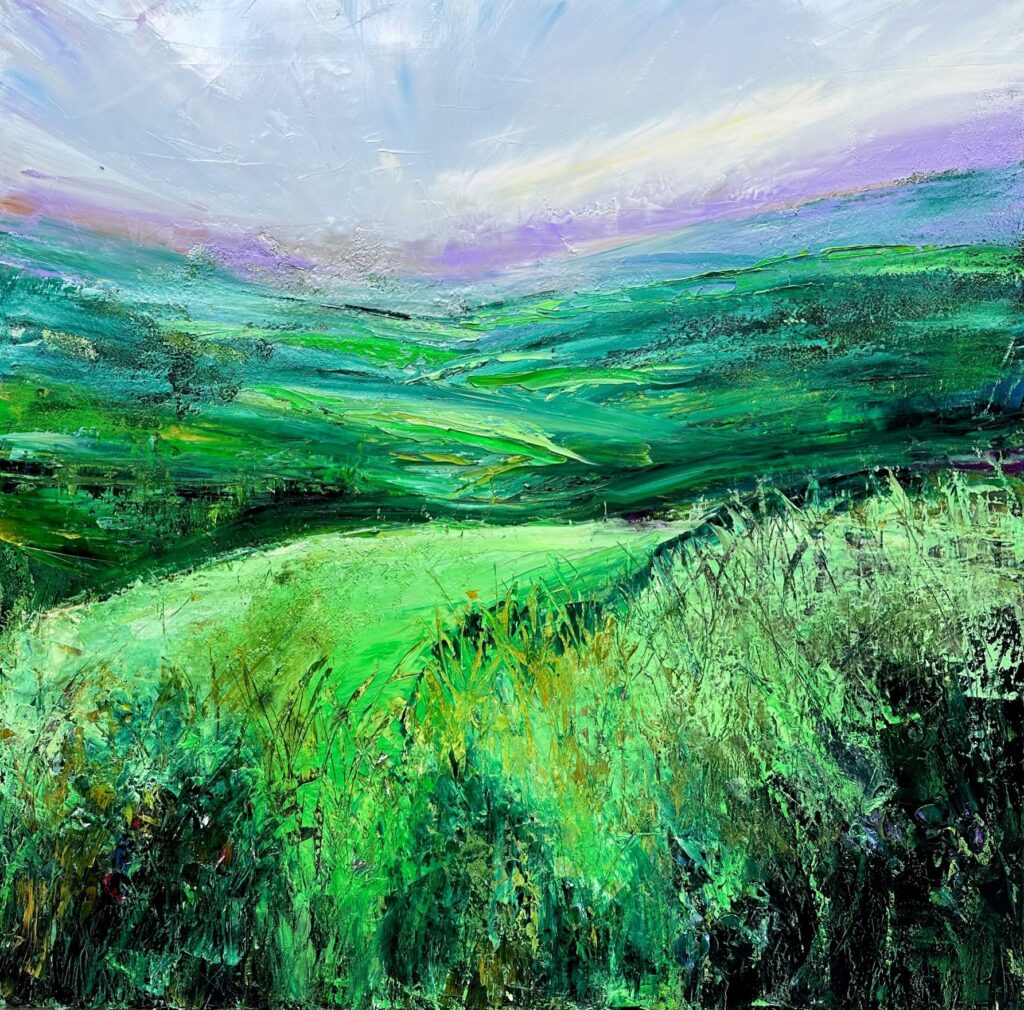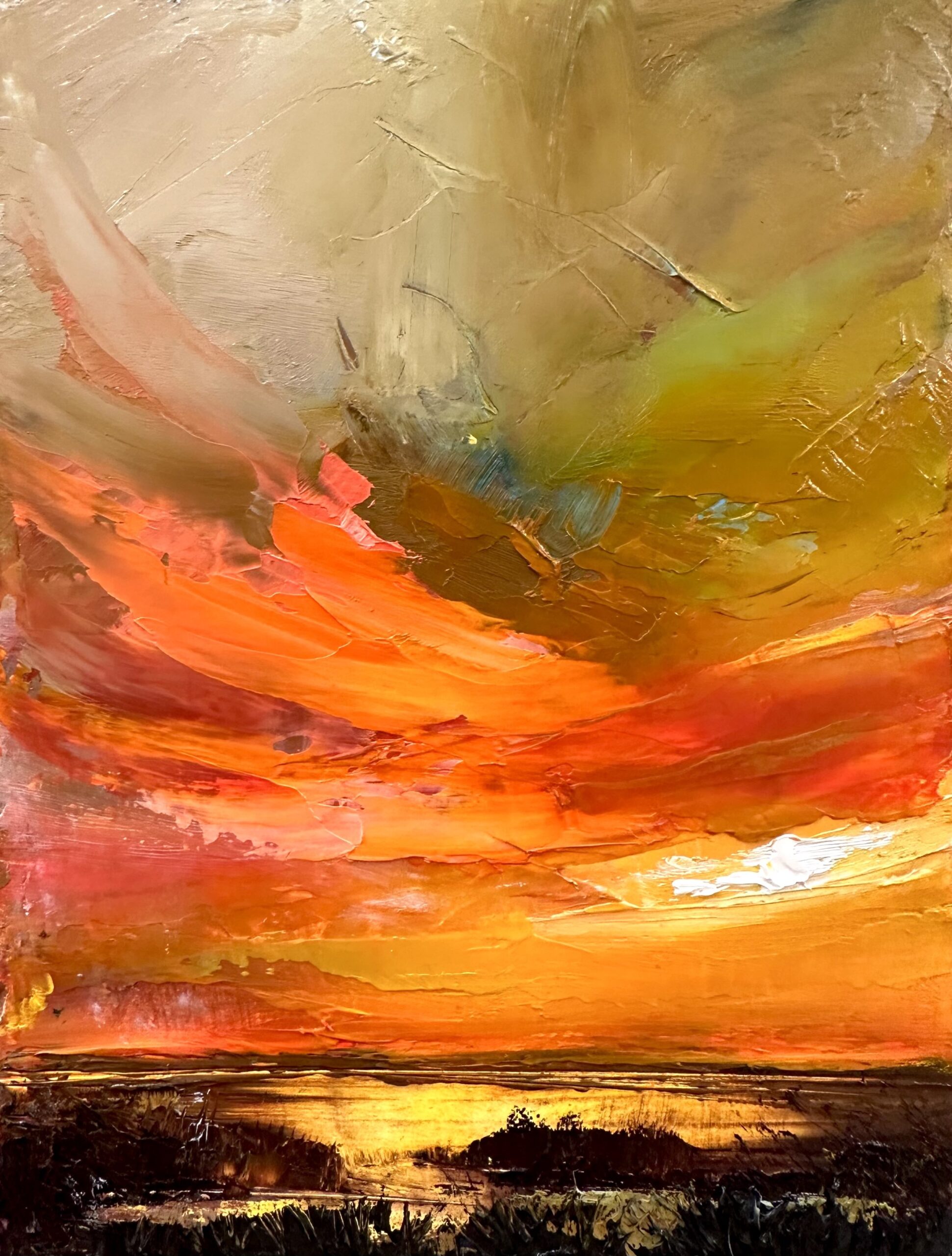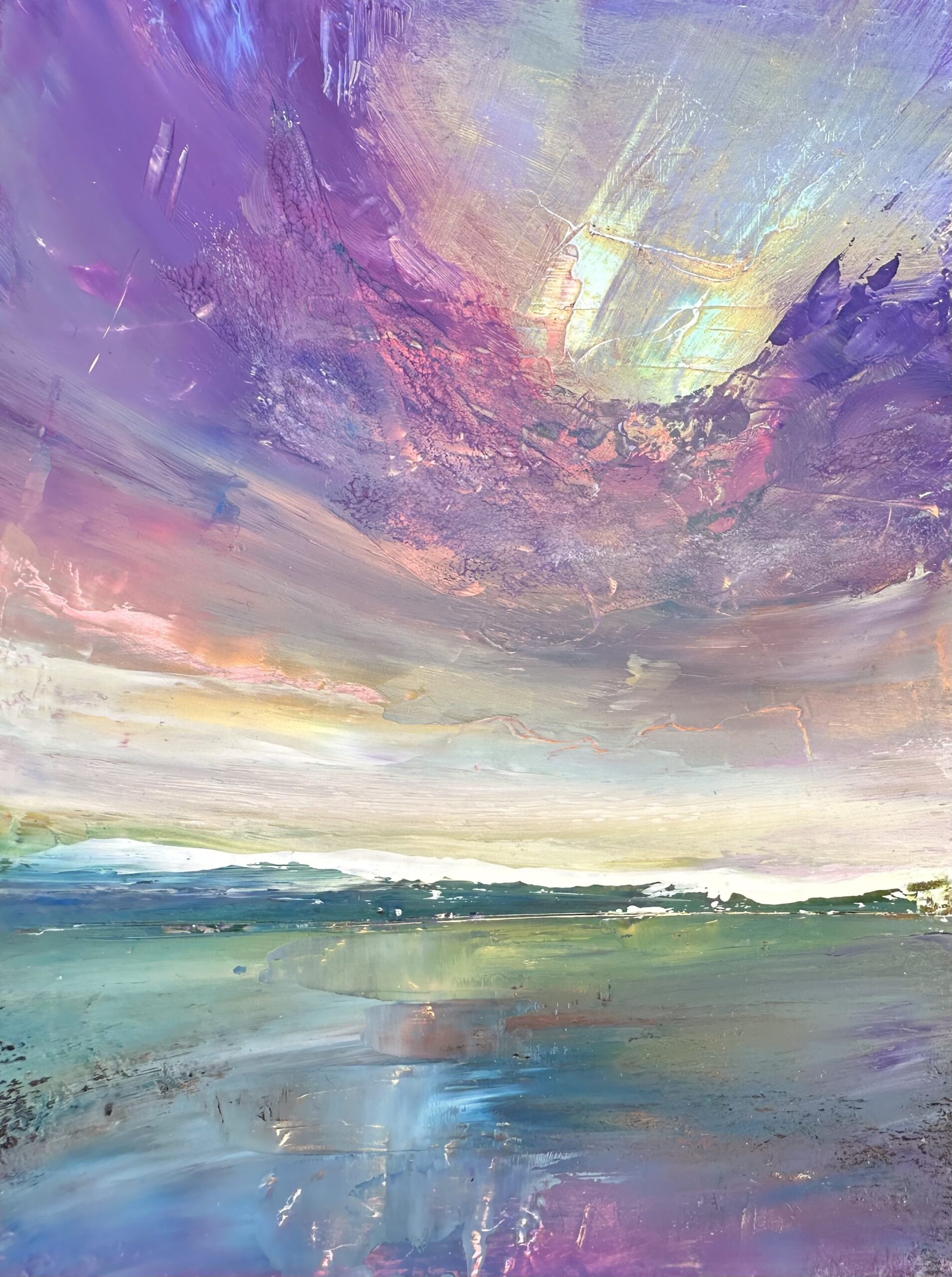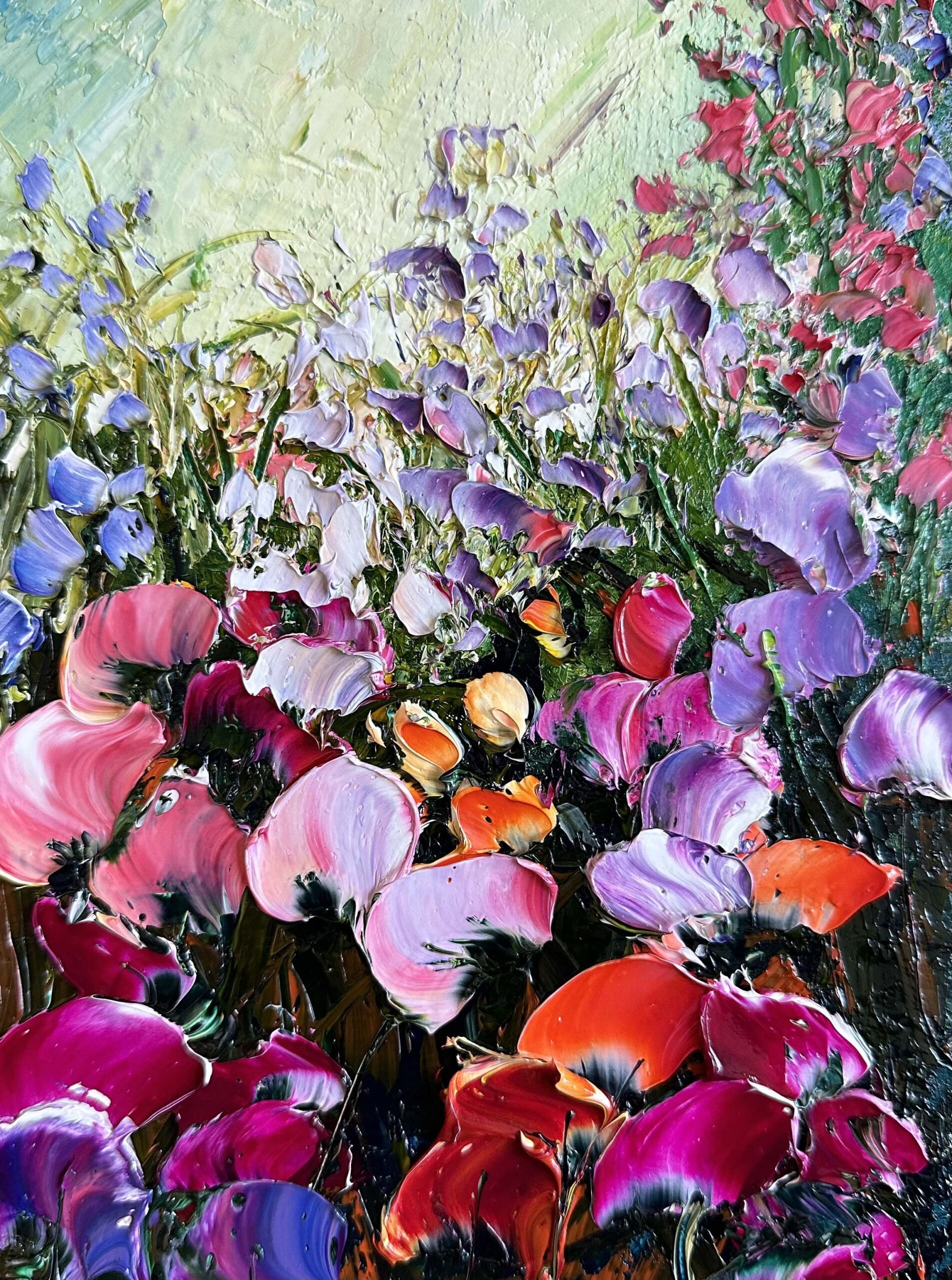
After law school at Stanford, Julia Powell would paint as a way to decompress. “I’ve been using watercolors since I was five—I can’t even tell you why or how,” she says, “and around the time I graduated from law school, friends started asking me to create little notecards for them as they started to get married or have children.” It wasn’t until her brother gifted her an oil painting set and an easel that she considered switching media. “Up until 11 years ago, I had never taken a painting class,” she says. “I started oil painting and I just instantly connected with it.” She began to post her landscapes online, and galleries from around the country soon approached her with representation offers. Within five years, Powell was able to quit her law career and focus on art full time. “I’m lucky that the subjects I like to paint are the works that people want to put on their walls,” she says.
Powell considers herself a contemporary Impressionist painter, and tries to convey the emotions of landscapes she’s encountered without worrying about being hyperrealistic. Her works feature large swaths of violets, blues, and vibrant greens, built up with impasto, and iridescent suggestions of light. Powell gravitates toward New England locations—she was born and raised in Cambridge, Massachusetts, where she now lives with her two small children—and finds herself especially drawn to Gouldsboro, Maine. “I don’t paint from photos or en plein air,” she says. “I just paint from my mind—so going to Maine is really important to create these memories that are then translated onto the canvas.” She hopes that her work serves as an “antidote to all the suffering we see every day.” And she believes that her homage to the 19th-century Impressionists suits this particular purpose. “I love Monet’s choice of colors,” she says. “I find them incredibly soothing. And for the most part, I’m trying to soothe people. Ultimately, I’m trying to create a joyful situation where people look at a painting and they can just breathe.”




